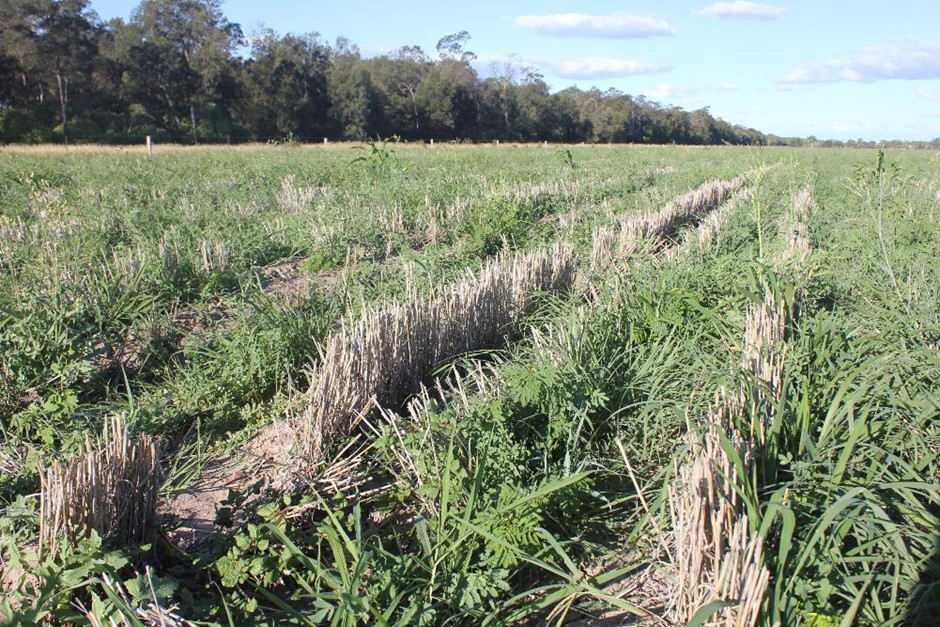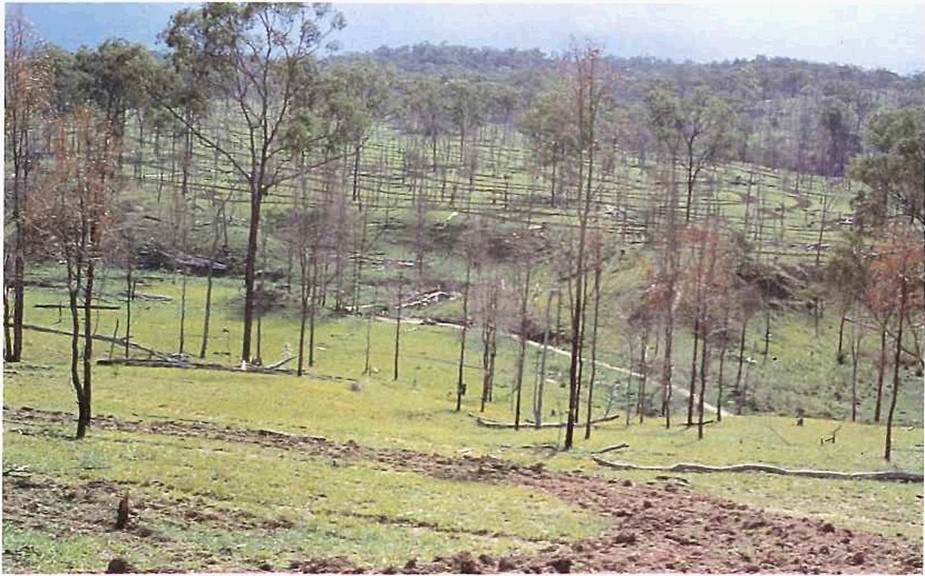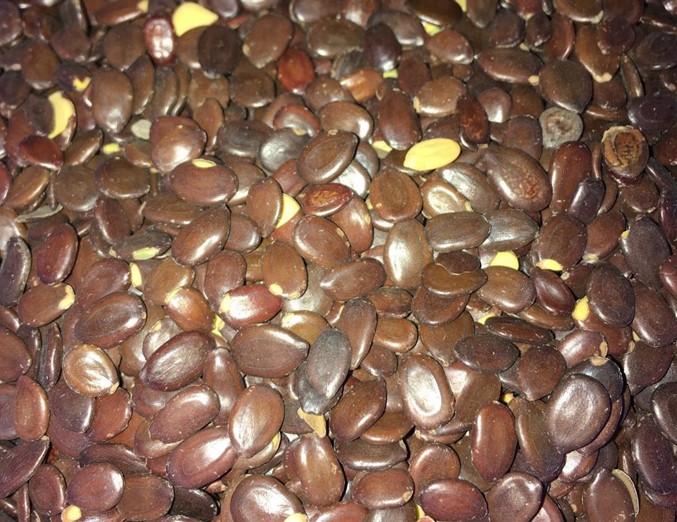Now is the time to plant your summer perennial pastures in the brigalow belt of Queensland
Now that most areas of the brigalow belt have had some rain and the forecast is for average to above average rain for the remainder of the growing season, it is the best time of year to plant your summer perennial pastures. For successful pasture establishment, the best results are achieved by following good agronomic principles.
Producing a reliable result
Ideally, by now you will have already fallowed your planting area to store enough soil moisture as insurance against unreliable rainfall and to reduce competition. For good soils in the Brigalow Belt, aim for 50cm or more of moist soil before sowing. The practice of fallowing is where paddocks are taken out of production without any growing plants for a period between crop cycles to:
- store soil moisture
- control weeds and reduce the seed bank in the soil
- breakdown some organic matter.
The benefits of fallowing are well known in cropping rotations but not widely applied when establishing perennial pastures.
Fallowing is not always possible in every landscape however knowing and managing the key risks of establishment can still protect your investment.
Higher input = lower risk
As with all management decisions there are trade-offs between options. Higher input establishment methods such as long fallowing and cultivation is a highly successful and reliable option but comes with a higher investment of time and money.
Practical and economic analyses of pasture establishment methods has shown:
- Higher-cost establishment usually results in higher financial returns and a lower risk of failure.
- Faster establishment post planting is more likely when high-input options are used. This generally delivers higher overall returns.
- When planting into an existing grass pasture, fallowing and planting in strips may give higher a benefit–cost ratio than planting the whole paddock.

Lower input = higher risk
The lower investment options of broadcasting seed on top of the soil surface out of a plane or fertiliser spreader into an unprepared seedbed (such as undisturbed established grass) are much cheaper but have a very high likelihood of failure or a poor result. Where money, time or equipment is limited, concentrating resources on a smaller area and achieving good establishment and long term persistence is a much better strategy than spreading limited resources over a larger area for a poor result.
There are methods for establishing pastures in areas where high input methods are not suited, such as heavily timbered or sloping ground. In these areas, the key principles still apply:
- Reduce competition pre-plant by slashing, burning or grazing existing grass
- Plant at the least risky time of year where soil moisture is present and follow up rain is most likely (January–February), and do not sow if seasonal conditions are not favourable
- Manage the young seedlings carefully by restricting grazing until plants are established and have set seed.
Planting legumes in strips
Fallowing and planting legumes in strips through existing pasture is a good option for areas where the existing grass is worth retaining and where access and resources are limited. These strips don’t need to be in straight lines and can weave in and out of timber, rocks and landscape features (e.g. around gullies) as conditions allow. Over time, legumes will spread outwards from these strips and colonise the existing pasture if managed carefully. These fallowed strips should be more than 3 metres wide to reduce moisture competition from surrounding roots, but the width will depend on the availability of suitable equipment and access restrictions.

Increasing your chance of success
Success with planting depends on good preparation and timing.
Over the planting period we need to consider:
Timing: When is the highest chance of germination plus follow-up rain within one month? For the brigalow belt, that is generally in January and February. Seedbed preparation must be completed beforehand in preparation for this narrow window. Minimum germinating rain is 25mm across 3 days but ideally 50mm across 5 days. Stored soil moisture dramatically increases the time seedlings can grow and survive before follow-up rain is required.
Soil surface condition: The priority is good seed to soil contact but without crusting on the surface. Small legume and grass seeds can easily be lost or trapped in soil cracks and excess organic matter. Crusting can also trap tiny young seedlings below the surface preventing emergence. The soil surface needs to be soft but not fluffy. Your boot or bike tyre should not leave a deep impression in your planting soil.
Seed quality and seeding rate: Not all seed is the same and planting rates should be adjusted to account for any changes in seed quality and seed coatings. Seed quality varies dramatically and it can have a big impact on the success of establishing a new pasture. Essentially, the more viable seeds planted per area the higher likelihood of success.
Seed quality
Planting using the best possible method but with poor quality seed at an inadequate rate will still result in failure and a waste of time, money and an entire growing season.
Over the past 10 years our team has purchased grass and legume seed and seen germination rates range from 0 to 90% and purities of between 30 and 100%. Poor seed quality wastes time and money but can be managed by being informed and prepared. It is highly recommended to request a seed quality certificate prior to seed purchase and to test any stored seed prior to planting.
Artificial seed coatings can be useful for planting fluffy grass and very small seed through conventional equipment but decrease the weight of live seed in each bag. Coating rates of 50% and above are common, meaning that 50% of the weight of product that you buy is coating material and not seed. These percentages should be considered when comparing the value of bare or coated seed. Quite often good quality bare seed will be better value than coated seed.
For more information, take the time to read It’s time to get organised with seed for the upcoming wet season.
Sowing rate
When planting pastures, the ‘rule of thumb’ planting rate is based on “pure live seed” at a recommended rate of 1kg/ha for small seeded pasture grasses and legumes. Pure live seed is a combination of the germination plus the hard / fresh seed percentages from your provided seed test. If you have a 50% pure live seed rate for example, then your planting rate needs to double to 2 kg/ha. If you also have coated seed, then your planting rate needs to increase further to account for the reduced amount of seed in the product. Even with a good germination percentage, planting coated seed can push your seeding rate up to 4–8kg/ha or even higher to achieve the same rate of pure live seed.
When planting into a prepared seed bed with good soil moisture, targeting a germination rate above 30% will give young seedlings the best chance of establishing before other weeds and grasses begin to compete for moisture. In this situation, for hard seeded legumes (such as leucaena, desmanthus and stylos), it is recommended to sow a percentage of seed that has been scarified to break down the hard outer coating of the seed and encourage rapid germination.

For sowing into an undisturbed or minimally prepared seedbed (such as broadcast into burned or sprayed grass), a level of hard seed (for legumes) or fresh seed (for grasses) can be useful for risk management to allow for periodic, multiple germination events to occur after future rainfall periods. This acts as insurance in case there is a long gap between rainfall events and the early germinated seed dies before roots can establish.
Inoculate your legume seed for plant health and nitrogen fixation
Whilst perennial summer pasture legumes do not need nitrogen fertiliser to grow well and remain healthy, seeds do need to be inoculated with their own specific rhizobia to be able to produce nodules and their own nitrogen. There are some pasture legumes such as shrubby stylo (Seca) that can utilise rhizobia already present in most soils. Others such as Caatinga stylo, will require their own specific strain of rhizobia to form nodules. It is these nodules that establish a relationship between the plant and the soil and allow the plant to convert nitrogen from the air into a form that can be used by the plant and added back to the soil.
Fertiliser
While generally regarded as fertile, many soils in the brigalow belt are deficient in nutrients essential to productive sown grasses and legumes. Whilst legumes can fix their own nitrogen, they also require adequate levels of nutrients such as phosphorous and sulphur. Ensuring the legume has sufficient nutrition, will in turn enable the legume to contribute nitrogen and production benefit to the grass within the pasture. Fertilise the legume and it will fertilise the grass.
To determine if, or how much fertiliser is required for optimal legume production, the best way is through a soil test. Considering the investment that is being made in establishing the pasture, the price of a soil test is a small cost.
For more information on soil testing visit Soil testing for pastures.
Regional advice and support
Recommendations for pasture establishment will vary depending on your climatic zone, soil type and management system. If you would like localised independent advice on methods for the successful establishment of legumes or grasses, contact the Queensland Pasture Resilience Program team in your area through the DPI Customer Service Centre on 13 25 23 or through the details below.
| Southern Queensland | Central Queensland | Northern Queensland |
|---|---|---|
| Ted Callanan | Kylie Hopkins | Katie Hay |
| ted.callanan@daf.qld.gov.au | kylie.hopkins@daf.qld.gov.au | katie.hay@daf.qld.gov.au |
| 0439 627 497 | 0467 726 349 | 0436 836 623 |
Pasture legume establishment work is continuing under the Queensland Pasture Resilience Program which is a partnership between the Department of Primary Industries, Meat & Livestock Australia and the Australian Government through the MLA Donor Company. The five-year program aims to help Queensland producers tackle the three big threats to beef production: land condition decline, pasture rundown and pasture dieback.